You enter your local hardware store in desperate search of paint. If you’re anything like me, you grimace at the sight of rows upon rows of lumber, lighting, and power tools.
What if a robot could help you find that paint? Now they can.
Robots are slowly invading retail in a new movement called retail automation.
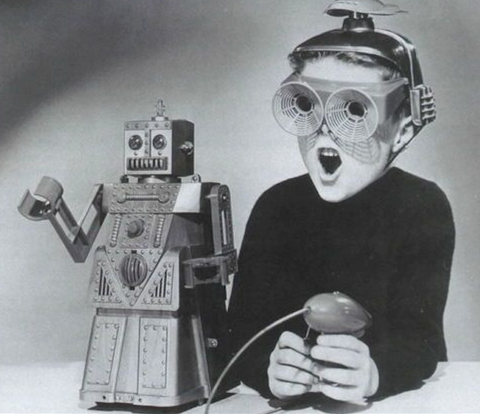
Image Credit: FilmSite
While they won’t look quite like that, it’s not far off from the machinery that’s making its way into traditional retail environments.
Robots have been welding, assembling, and handling industrial materials for decades. But now other industries, including and especially retail, are seeing the value of robotics and automation and acting on it. So much so that the BBC built a search engine that can predict the likelihood that you'll lose your job to a robot in the next two decades.
Retail Automation is Coming — But Why?
The answer is simple. Humans have evolved to expect more from their buying experience, and retailers are looking to technology to help them deliver.
Here’s how robots can help retailers service the all-consuming consumer.
Delivering an Exceptional Customer Experience
According to research from consulting firm thinkJar, 55% of customers are willing to pay more if they’re guaranteed a good experience. The word “guarantee” implies that a simple brand promise no longer makes the cut. More retailers are experimenting with in-store robots that can greet customers and help them easily navigate the store to find what they’re looking for (like paint!). This is yet another way to lure customers into your store in the face of a growing ecommerce industry.
For example, robots will soon be rolling down the aisles of 11 Lowe’s locations in the San Francisco Bay area. The company first tested the idea with a similar robot in sister store Orchard Supply Hardware in 2014. Equipped with their findings, they built LoweBot, an autonomous retail service robot meant to add an additional layer of assistance to existing Lowe’s employees.
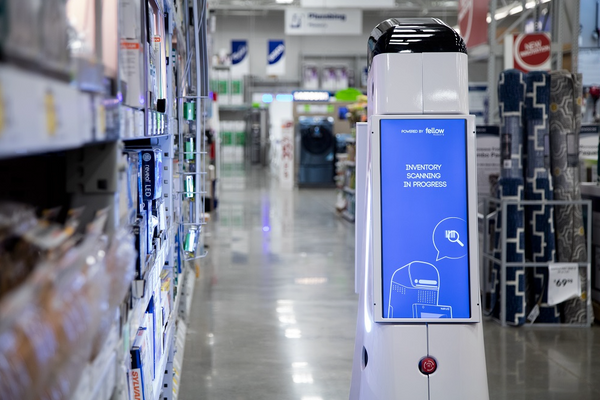
Image Credit: Lowe's Innovation Labs
LoweBot is equipped with voice recognition and can respond to customers in several languages or push specific store promotions. It also has a 3D sensor that can help customers identify products and guide them to their location within the store. Live employees are able to connect directly with customers through LoweBot if the need is beyond the robot's capabilities.
Pepper the robot is already widely used in Japan and is being piloted in Europe. More recently, she embarked on a “roadshow” overseas that began in a Silicon Valley gadget shop. This impressive and adorable bot is able to distinguish human emotions like happiness, joy, sadness, and anger and respond accordingly.
In a retail-specific context, a Pepper robot knows when and how long you’ve been in the store, how many products you’ve interacted with, and your general sentiment when interacting with those products. She can also provide gentle and persuasive reminders of in-store promotions.
When retailers can access that kind of data regularly, they can take more informed, actionable steps toward optimizing the in-person shopping experience.
And honestly, how can you say no to that face?
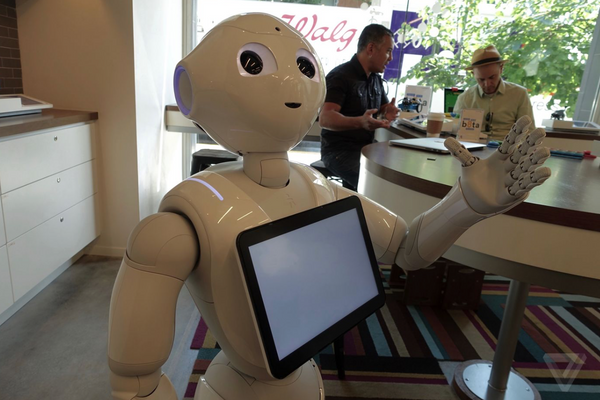
Image Credit: TechNinja
Modernizing Supply Chain Management
Robots have actually been working behind the scenes for years already to help retailers streamline their supply chains. And it’s no wonder: Retailers are losing $1.75 trillion dollars every year thanks to out-of-stock, overstocked, and returned items. Out-of-stock inventory, for example, is eating away at over $600 billion dollars in retail sales. That’s a hefty chunk of change retailers are losing annually from a preventable problem.
Thankfully, robots have been working behind the scenes to automate inventory management and order fulfillment which can reduce employee overhead and improve efficiency by reducing mistakes.
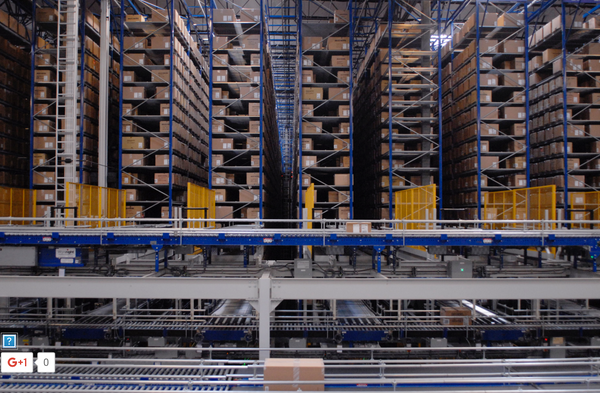
Image Credit: Marketplace
Skechers is the second largest footwear brand in the U.S. with one of the nation’s largest concentration of warehouses located in California. A Robotics Business Review report says that after investing nearly $100 million in automating warehouse operations, the facility handles upwards of 17,000 pairs of shoes per hour — an astounding display of efficiency. And the brand expects that number to increase by 25% over the next few years.They also reduced their warehouse workforce by 75% from 1,200 to 500, clearly signalling the significant impact robotics will have on supply chains in the coming years.
According to the report, because of the level of automation, “human hands will seldom touch merchandise from the time it enters the distribution center until it emerges for pickup at one of 270 truck bays.”
Similarly, Amazon employs over 30,000 Amazon robots, formerly known as Kiva robots, in 13 facilities. Chinese competitor JD.com has a massive warehouse in Shanghai that only requires the supervision of one person over mechanical operations. Partially due to this level of automated efficiency, JD.com processes more than three million online orders per year.
Within the next year, Walmart is also looking to roll out custom-built flying drones that will help manage warehouse inventories in the U.S. The drones are capable of taking 30 frames per second and will send an alert when a product is no longer available or not properly stocked.
Why create a plan for drones to only fly around in a warehouse? Once again, Walmart is working to streamline supply chain operations with these flying robots. According to Reuters, it takes approximately a month for Walmart employees to manually check inventory in their warehouses. But once the drones take over this process, this task will only take about a day. That’s a huge potential cost saving for Walmart.
On-Demand Delivery Services
Customer expectations around delivery times are quickly playing a larger role for retailers thanks to retail giants like Amazon. Five business days is becoming less appealing, and nine out of 10 shoppers consider “same day,” “next day,” and “two-day” delivery as fast. But how about delivery in less than half an hour?
Amazon continues to push the envelope by testing flying drones in the U.K. for delivery in under 30 minutes. The prototype was unveiled last year and carry up to 5 lbs for 10 miles at 400 feet, but there’s no word yet on when these autonomous flying machines will be filling our skies.
Estonian robotics company Starship isn’t looking upwards — instead, it aims to revolutionize delivery by hitting the pavement. Launched in 2014, their website states that millions of packages are sent securely every day. The bot uses GPS, cameras, and sensors to move seamlessly among pedestrians and deliver packages on demand in 20 minutes at a speed of 4 miles per hour. Starship robots comes equipped with microphones for two-way communication and are being tested in 20 cities across the U.S. and Europe.
CEO Ahti Heinla believes his fleet of robots are a simpler alternative to self-driving cars. Heinla told The New York Times: “Currently the biggest problem the logistics companies have is with last-mile delivery. When the van is stopping every couple of minutes to knock on another door, this is the biggest source of inefficiency.”
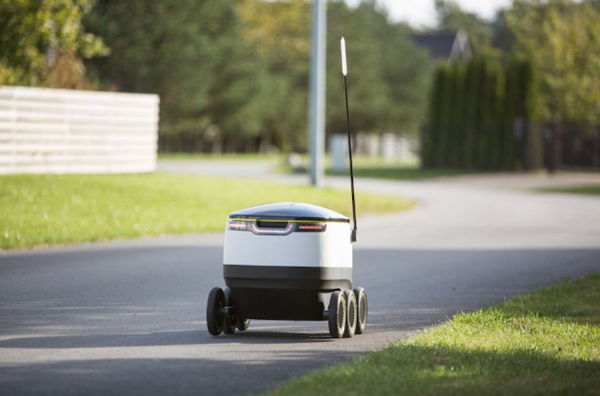
Image Credit: Starship
The Cost of Employing Retail Automation
Interested in testing a robot for your business? Take a look at your current operations and consider where automation might produce the greatest return.
With all the efficiencies different bots can bring to your business, these automatons aren’t as pricey as you might expect. Purchasing a retail bot like Pepper to charm your customers will set you back about $2,000, while a warehouse bot like Baxter can free up your human labor by covering monotonous tasks for $22,000.
To get a retail bot of your very own, you can buy a single robot outright (like in Pepper’s case), or retailers can work with a robotics firm like Rethink Robotics to customize a model based on your brand’s specific needs.
Would you consider investing in automation for your retail business? And how would you use them? Share your thoughts in the comments below.
Read more
- Temporary Staffing 101: Hire Employees For the Holiday Rush
- How to Create an Inclusive Retail Store Experience
- Why People Buy: 5 Aspirational Marketing Tactics for Retail Brands
- These Retailers Could See a Surge in Sales Thanks to New Year’s Resolutions
- Social Entrepreneurship: How Retailers Build Compassion Into Their Business Model
- Do Retailers Need a Digital Fashion Strategy? 5 Brands Designing for the Metaverse
- Inflation in Retail: Everything You Need to Know
- How to Build Your Own Homemade Business With Craft Kits
- 10 Low-Key Things Retailers Can Do To Get Ready for the Year Ahead





